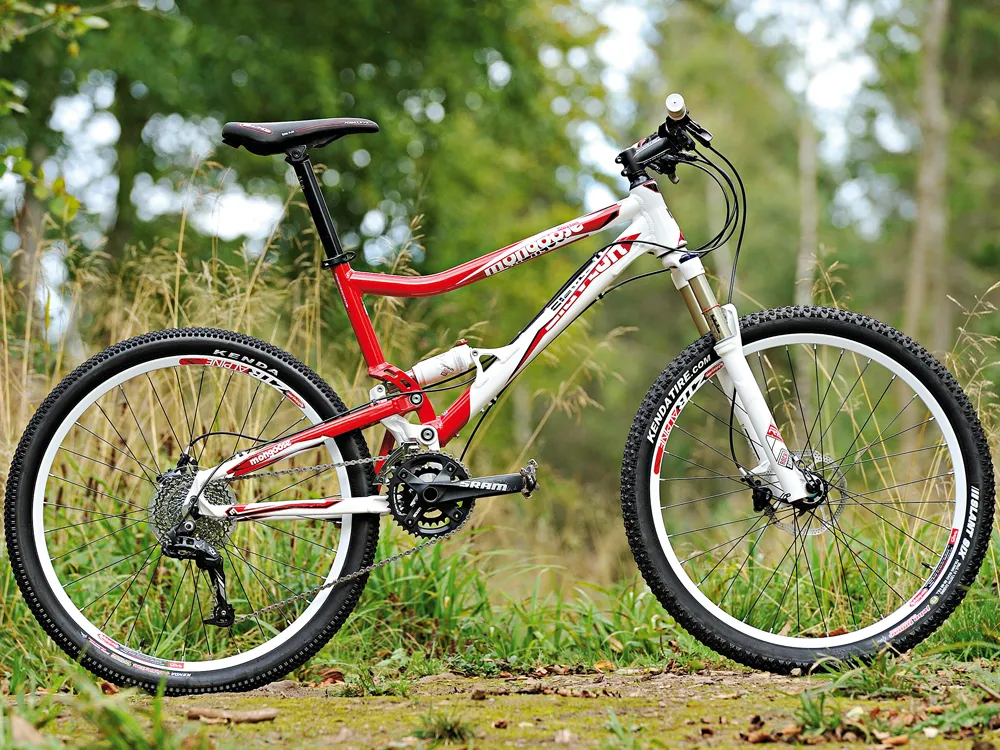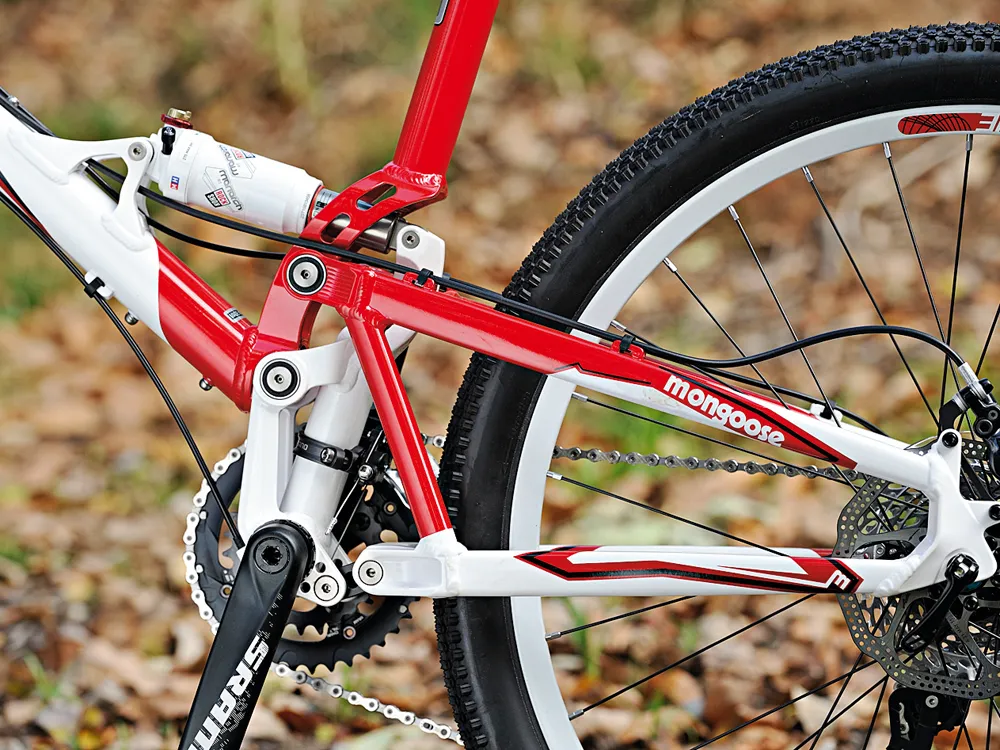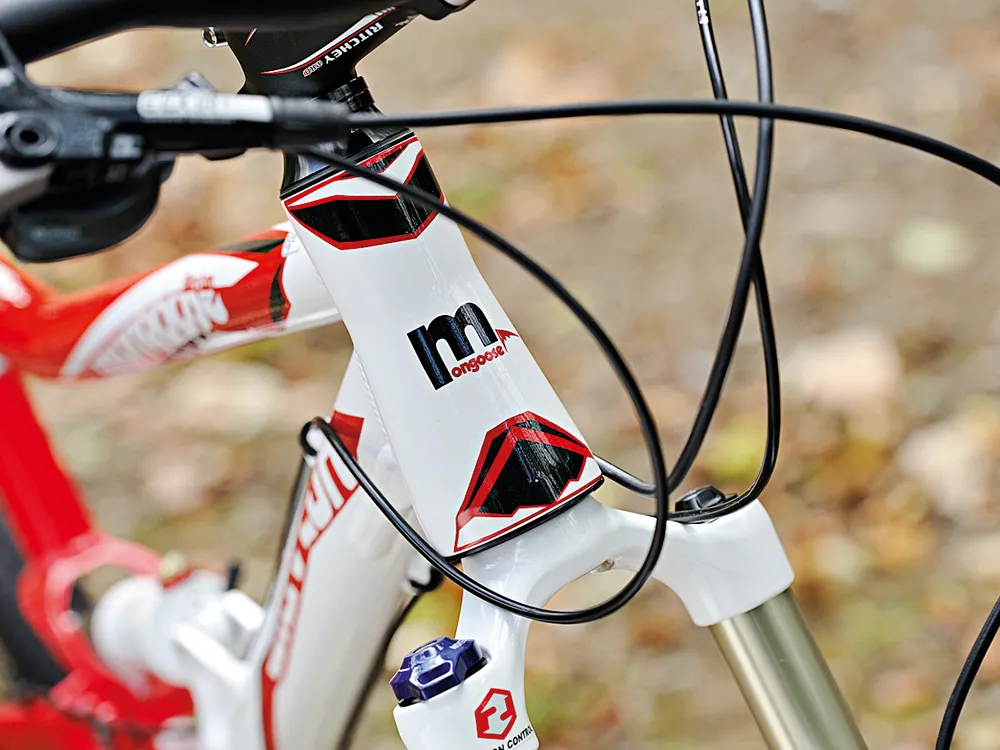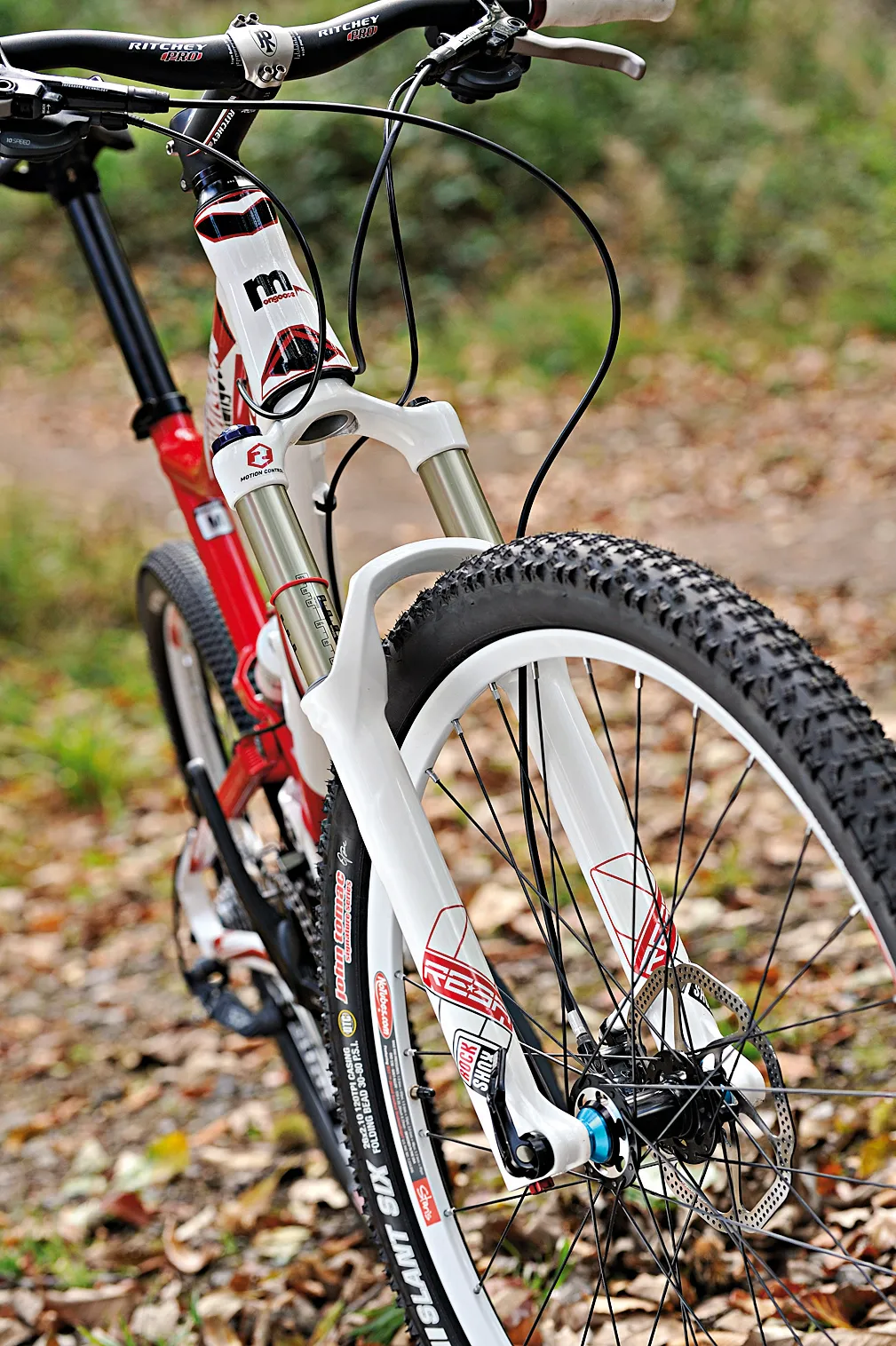The GT i-Drive-esque FreeDrive layout of the Mongoose Slayton would be easy to dismiss as being a decade old and somewhat stale in the fast moving world of modern full-suspension mountain bike design. Of course, that would only really be true if the FreeDrive design didn’t work.
News for the shape haters out there – armchair critics who pass judgment without actually riding the bikes they diss – the FreeDrive system can and does cut the mustard. We had a blast on the Slayton, not because it blew our minds in any particular way but because it simply got on with the job of entertaining us with lots of honest hard work.
Ride & handling: Perfectly good middle-order trail bike
The Slayton's 11.9kg (26.3lb) weight is reasonable for the money but means it isn’t going to win a flat-out sprint or a race to the top of the mountain, or even one back down again. But – drum roll, please... – in the right hands it can be hustled along at a rate that'll make you feel more than qualified to call yourself a proper mountain biker. The Mongoose does the job asked with a flourish and without asking more from you physically than is necessary.
It’s the sort of middle-of-the-road, no-surprises bike that regular riders will find easy to live with, day to day. Before you think we’re not properly impressed, think again. We enjoyed our time on the Mongoose, hitting technical, twisty, root-infested singletrack with a commitment that normally only comes with much longer term attachment to a bike. That’s the friendliness of the Slayton shining through, letting you chuck it about without fear of being bitten back.
The tall look of the frame is a visual trick caused by the floating bottom bracket, and on board the bike feels smaller and more compact, which makes you feel you can hit those mid pace, low berm, singletrack turns faster and faster. If you’re an experienced trail rider looking for a new plaything you can push the Slayton’s limits a bit harder still.
Well, you would be able to but for two small issues. The first is the narrow Ritchey riser bar, which, if we were going to give the Slayton a permanent home, we’d immediately lose for something a bit wider and possibly with a shade less than the 20mm rise, to make it feel a bit more racy.
While we were in the shop buying the new bar we’d bung a shorter stem on there too. The stock stem is a bit of a tiller; while fine for long open fire road rides it really doesn’t do the handling of the Slayton much justice for diving in and out of the tight stuff.
The other item that holds the bike back in soft, damp conditions is the Kenda Slant Six tyre up front. Leave the Small Block Eight on out back, where the rounded, low-profile tread works a treat, gripping and sliding with predictability. But at the front we’d opt for something with a little more shoulder to give a better sense of grip in the turns, especially when it’s wet and muddy – maybe Kenda’s old-school but still fantastic Nevegal. Oh and some might find the SDG I-Beam saddle and seatpost a bit firm, too.
Frame & equipment: Quality chassis and suspension are worthy of component upgrades
Okay, we’ll readily agree with those who say the bike looks like a cut-and-shut welding job of two dissimilar halves of bike. We’ve told Mongoose before that the shape makes our eyes bleed but the designers are sticking with it resolutely and, well, looks mean little on the trail. And it’s on the trail that the 120mm Slayton chassis comes alive and delivers just the kind of friendly ride that makes hardened believers out of Mongoose riders in double-quick time.
The chunky butted alloy frame isn’t light but it’s stiff enough to resist being twisted into a knot, even by strong legs, and you get the feeling that it’ll shake off being parked in the bushes when you’ve made a minor miscalculation. The SRAM X7 transmission is solid, predictable and reliable. It’s also cheap(ish) to replace like-for-like and integrates perfectly with the more expensive SRAM kit if you decide to up-spec as you wear stuff out – the frame and suspension deserve it.
The suspension is a RockShox lockout, with a Monarch shock out back and a Reba fork up front doing sterling work to insulate the rider from the worst of the trail. We’d have liked a little more life and vitality out of the rear shock tune (having just ridden the 2012 Monarch, the difference was plain), but that can be fixed with a retune at service time, and it’ll be fine until then.

This article was originally published in What Mountain Bike magazine.



